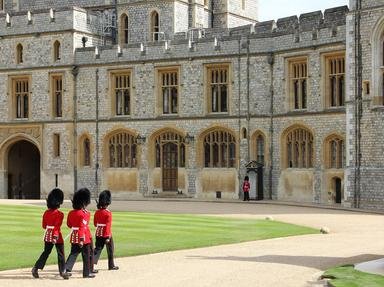Quiz Answer Key and Fun Facts
1. Before ascending the Scottish throne the head of the family held which hereditary office of Scotland?
2. Who was the husband of Marjorie Bruce, daughter of King Robert I, and the father of the first Stewart King, Robert II?
3. Robert Stewart ruled Scotland in his uncle's name before ascending the throne.
4. Which of Robert II's sons succeeded him as King?
5. How is Robert III's eldest son, David, Duke of Rothesay, believed to have died?
6. Where was James I of Scotland when he succeeded as king?
7. Who was the lady-in-waiting to Queen Joan who suffered a broken arm trying to save James I from assassins?
8. Who was married to James II?
9. Whose marriage ultimately brought Scotland the Orkney and Shetland Islands?
10. After what battle was James III murdered?
11. Which Stewart king had a brother and a son who both held the position of Archbishop of St Andrews?
12. The daughter of which French king married James V?
13. Mary, Queen of Scots left Scotland for France in 1548 and was later married to the Dauphin. She became Queen of France when her husband became Francis II. After Francis's death she returned to Scotland. What year was this?
14. Who was the prominent Scottish reformer who often clashed with Mary I?
15. After her forced abdication Mary I escaped from her prison and attempted to regain her throne. At which battle in 1568 were her forces defeated?
16. Which illegitmate member of the Stewart family served as Regent for the infant James VI?
17. The Gunpowder Plot was a famous attempt to assassinate James VI, who was now also James I of England. When did this take place?
18. Which Stuart king lost his head following the English Civil War?
19. Who was the last Stuart monarch of England and Scotland as separate countries and of Great Britain?
20. Down but not out following the passing of the throne to the House of Hanover in 1714, the Stuarts made a number of attempts to regain the throne over the next thirty years, most notably in 1715 and 1745. What was the name given to supporters of the Stuart cause?
Source: Author
alan03
This quiz was reviewed by FunTrivia editor
thejazzkickazz before going online.
Any errors found in FunTrivia content are routinely corrected through our feedback system.

